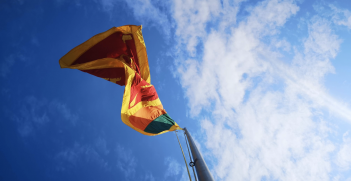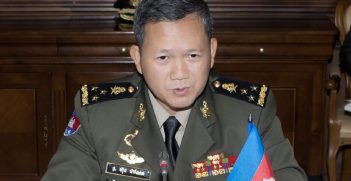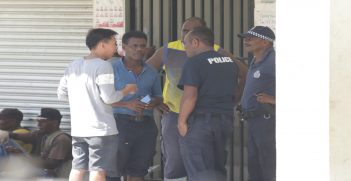A Past to Settle, A Future to Gain: Rajapaksa Has to Harness All

To say that the result of the Sri Lankan elections was divided along geographic and ethnic lines is an oversimplification. Instead, one ought to examine the long-term effects of the civil war.
The recent election of Gotabaya Rajapaksa as Sri Lanka’s seventh executive President has resulted in a mixed reaction from regional and world lobbies. A man who walks under the shadow of allegations of human rights violations and high corruption during his earlier stint as Secretary of Defence (2005-2014), Rajapaksa ran a successful campaign under the aegis of the Sri Lanka People’s Front (SLPP). The SLPP was founded by his brother and former President Mahinda Rajapaksa, and in November 2019 defeated the United National Party (UNP) led by New Democratic Front contender, Sajith Premadasa. Rajapaksa publicised his candidacy merely days after April’s Easter bombings in Sri Lanka, and promised to make Sri Lanka secure again. In the 16 November election, Rajapaksa polled 52.25 percent of the national vote against 41.99 percent received by Premadasa. In raw numbers, the winning margin was 1.4 million votes: a clear mandate. In his first week in office, Rajapaksa has sworn in a cabinet of ministers in which his brother, the one-time (2005-2014) President Mahinda, is Prime Minister. In the immediate aftermath of the election win, several incidents were reported where Muslim and Tamil persons had been attacked and some signage boards in Tamil were vandalised. New media shares insinuated Rajapaksa’s supporters to be responsible for the unrest. The disturbances, however, were small and within control.
The pathway to the election win was shaped by a four-and-a-half-year coalition government that couldn’t deliver (or, convince the people of their delivery). When Maithripala Sirisena was endorsed as their presidential candidate in late 2014, former Prime Minister Ranil Wickremasinghe’s UNP-led front promised the electorate justice against corruption, state terror, and what Wickremasinghe called “Rajapaksa poshanaya:” the self-sustaining of the Rajapaksa family. In the aftermath of their civil war victory in 2009, the Rajapaksa axis launched a political project aimed at consolidating a centralist power set up with its own members at the heart. In common parlance, they were often critiqued as attempting a “dynastical rule.” In spite of promises to redress the alleged malpractices of the Rajapaksas – and notwithstanding legal and procedural measures taken towards that end – the Sirisena-Wickremasinghe coalition failed to follow the processes through with conviction. While some intermediary bureaucrats were prosecuted and several former ministers were charged in court, the delivery was anti-climactic and failed to impress. In November 2018, as a demonstration of the growing rift within the coalition government, President Sirisena fired Wickremasinghe and – in a procedure that was later endorsed as unconstitutional – appointed Mahinda Rajapaksa as prime minister. After 51 days of uncertainty, Wickremasinghe was restored in his seat. Merely four months later, the Easter bombing attacks took place, and the country’s security was exposed and humiliated. The unexpected attack further dwindled the popularity of the government. The Rajapaksa camp stepped up, promising the electorate a safe and secure future.
The Rajapaksa election campaign was decisively energised by a strong wave of mob-style Sinhala Buddhist nationalist sentiment that first rose through an anti-Muslim wave of recent years. Having emerged under various names, these groups and individuals were vocal in the post-Easter vortex, where the culture, customs, businesses, and schools of the 9 percent Sri Lankan Muslim minority was under threat. Since 2009, in the Sinhala extremist consciousness, the Muslim had in many ways taken the place of the demonic “ethnic other:”: the seat of the Tamil since independence in 1948, to the end of the war. Resonant of anti-Tamil riots in 1956, 1958, 1977, 1979, 1981, and 1983, between 2011 and 2018, the Muslims were periodically targeted under the pretext of demonising banners. Critics of the Rajapaksas are often preoccupied in suggesting links between that camp and the rise of these post-war extreme nationalist discourse. Some of these mob-style nationalist groups in fact promoted Rajapaksa’s candidature and the need for a strong Sinhala-Buddhist leadership. New media influencers with a strong Sinhala-Buddhist bent and pro-Rajapaksa media aired provocative news and features which were arguably meant to polarise the electorate along ethno-religious lines. As a more recent example, just before the election, a prominently placed news item implicated a Tamil MP as having urged Tamils to vote for a particular candidate as it was the “only way to defeat the Sinhalese.” The MP denied this news as a misleading fabrication. But the provocation was already done. Such subtle (and unsubtle) manipulations crafted a deep pro-Sinhala nationalist gulf in the election run-up.
As the first results were being released, pro-Rajapaksa new media (and memes) declared the mandate as an ethnically divided, segregationist one. Keeping in line with election patterns of the past 15 years, while the Sinhala-majority southern districts of the island had voted in favour of Rajapaksa, the north and east had almost singlehandedly voted against him. These former war-affected districts’ lack of confidence in a Rajapaksa was indicated in the staggering difference between the candidates’ final tallies. For instance, the majority-Tamil Jaffna district of the Northern Province Premadasa (83.86 percent) had gained a landslide win, while Gotabaya Rajapaksa had only received 6.24 percent of the vote. In the Vanni district (majority-Tamil), Premadasa polled 82.12 percent against Rajapaksa’s 12.27 percent. The majority-Muslim electorate of Batticaloa (Eastern Province) was won by Premadasa who polled 78.70 percent, against Rajapaksa’s 12.68 percent. To offset this pattern, in the deep south – traditional Rajapaksa territory – Gotabaya won convincing victories in Hambantota, Matara, and Galle districts where he received (in that order) 66.17 percent, 67.25 percent and 64.26 percent of the total vote. All three districts are of high Sinhala (and Buddhist) concentration.
However, to suggest that the north and the east had cast a “divisive” vote is a misleading interpretation. Their rejection of a Rajapaksa leadership has to be read differently. These are parts of Sri Lanka that have suffered under a prolonged war, and where restoration and reconciliation have been slow. Both Mahinda and Gotabaya Rajapaksa have been key players in the final war in 2009 where a number estimated between 40,000 and 70,000 are generally presumed to have died. Others who are said to have surrendered to the state troops are still being sought by their relatives. Post-war, the atmosphere that prevailed in the Tamil-speaking areas was still militaristic and controlled. The Sirisena-Wickremasinghe coalition espoused the trust of these regions through gestures such as the release of confiscated land during war time, the setting up of an Office for Missing Persons, infrastructure development, and so on. Some of the virulent critics of these progressive measures later identified with the extreme Sinhala nationalist camp who endorsed Rajapaksa’s bid. Some pro-Rajapaksa social media memes responded to the northern vote won by Sajith Premadasa with photoshopped images of Premadasa’s face pasted on Velupillai Prabhaharan, the former supremo of the Tamil separatist group Liberation Tigers (LTTE). However, in reality, the north had rejected the line of separatism as a candidate promoting segregation polled less than 1 percent of the total vote.
Rajapaksa’s biggest challenge will be to choose wisely – to choose progressive, all-inclusive schemes to harness all ethnic and religious groups. At present, his camp is infested by extreme Sinhala-Buddhist nationalists who have brought him to power. But that doesn’t mean Rajapaksa has to pander to their needs. Rather than alienate the Tamil and Muslim communities, he has a golden opportunity to redress their griefs and to alleviate their fears. By appointing his brother as prime minister, he has given a predictable first signal. But, with courage and fortitude he can foster a balance from which he can address a futuristic Sri Lankan nation. Rajapaksa has all to gain and nothing to lose.
Vihanga Perera is a writer and researcher with a Sri Lankan focus. He is a published author and former columnist to two national newspapers in Sri Lanka.
This article is published under a Creative Commons Licence and may be republished with attribution.





